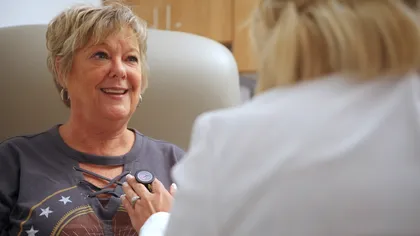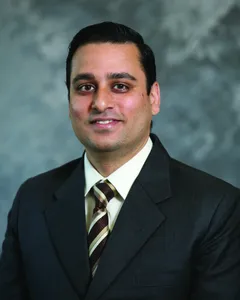Do you experience pain or cramps in your legs and feet? These symptoms may not only be caused by increasing age; they may be signs of a much more serious condition called peripheral vascular disease (PVD).
To raise awareness and provide education to help people recognize the signs and symptoms, Sarah Bush Lincoln is hosting a New Face of Heart Disease event focusing on PVD from 2 to 3 pm Wednesday, March 29, at the Lifespan Center, 11021 E. County Road, 800N, Charleston. The free event includes light snacks and will feature Prairie Heart Institute Interventional Cardiologist Amit Dande, MD, who will talk about the symptoms, treatment and management of PVD. Dr. Dande will also answer questions following his presentation.
“This is a very serious health problem that has serious risks if not handled properly and quickly,” Dr. Dande said. PVD is a slow and progressive circulation disorder. It may involve blockage in any blood vessel outside the heart, but the legs and feet are most commonly affected.
Dr. Dande, who is fellowship trained in peripheral interventions, is currently performing these procedures at Sarah Bush Lincoln where he provides full-time care. In addition, Curtis Green, DO, a board-certified thoracic and vascular surgeon, also performs peripheral revascularization procedures at the Health Center. He is trained to perform both minimally invasive and traditional open surgical procedures.
Both Drs. Green and Dande agree that lifestyle changes are the first step in fighting peripheral vascular disease much like heart disease. Exercise can help open arteries and veins and improve blood flow. Managing cholesterol and blood pressure, and not smoking, are also important. However, many with peripheral vascular disease may need to have an artery-opening angioplasty or open surgical treatment.
“As the technology has improved, we are doing more and more less invasive procedures, using catheters, intravascular balloons and stents, which are producing better results,” Dr. Green said. Angioplasty is a procedure in which a balloon is inserted through a catheterization into the blood vessel in the affected arm or leg to open it up and improve the blood flow. A stent may also be inserted to keep the artery or vein open.
“The advantage of these procedures is that they are minimally invasive and people recover very quickly,” Dr. Dande said. These procedures are done on an outpatient basis usually taking one to two hours. And people can go home that same day and resume normal activity within just a day or two.
However, both doctors are concerned about the growing health trend. “There are many people who have decreased circulation in their extremities, but because they are getting older and are not as mobile, they don’t have any symptoms,” Dr. Green said. The earliest symptom of PVD is often pain or fatigue when walking. When the disease becomes more serious, people start experiencing pain or cramps at night, tingling in the feet or toes, skin that looks dark blue or sores that do not heal.
Diabetics and smokers are at especially high risk for developing the disease. If left untreated, “people often develop sores that won’t heal and they may have to have their foot or leg amputated,” Dr. Dande said. “Our goal is to help reduce the number of amputations and keep people walking on their feet for as long as possible.”
“The New Face of Heart Disease” event is free and open to anyone interested in learning more about PVD. For more information and to reserve your seat, call the SBL Marketing Department at 217 258-2420.










